As a rule, I knit the petals from right to left (in longitudinal rows). But sometimes it is convenient to knit them from the bottom up (transverse rows). This is precisely how the petals of a narcissus and of a seven-color flower are connected, with the only difference that the petals of the narcissus are knitted on a circular basis, while in the seven-color plant all petals are single. Leaves for narcissus and seven-color flowers are also connected according to this principle. Thick thread and hook are used solely for clarity. In fact, I knit with hooks with numbers less than one and threads comparable in thickness to the "toffee" or thinner.
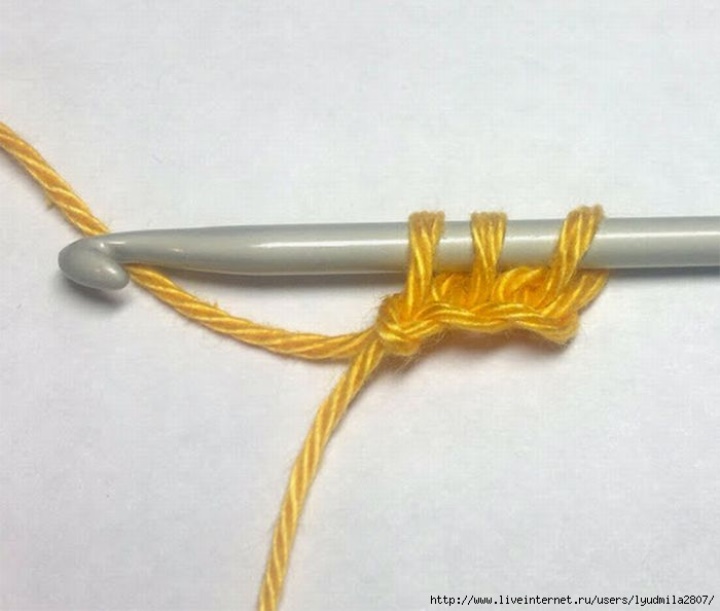
1. Tie a chain of three air loops. I hardly tighten the first loop and I also use it as a working loop.
2. Dial loops for the first Tunisian series.
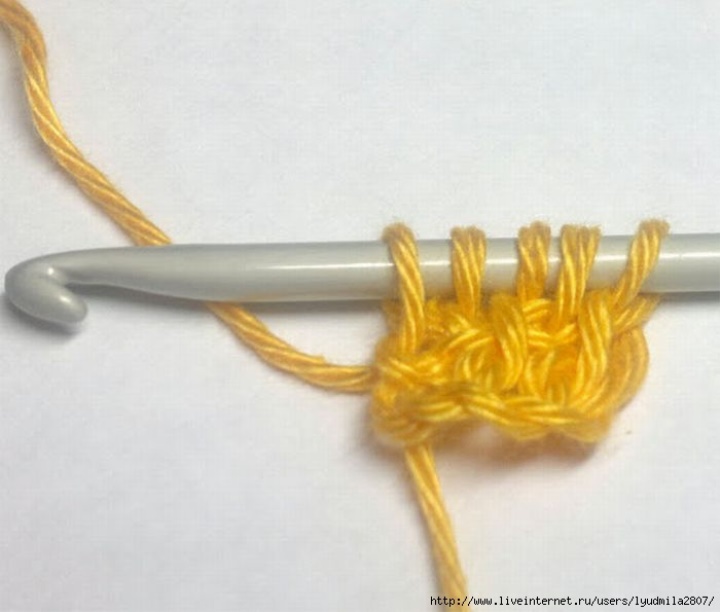
3. First knit loop single. The rest are two. The first row is ready. It has 3 columns, including the edge.
4. When looping for the second row after the right edge and in front of the left edge, pull out an additional loop from the horizontal jumpers between the columns of the first row.
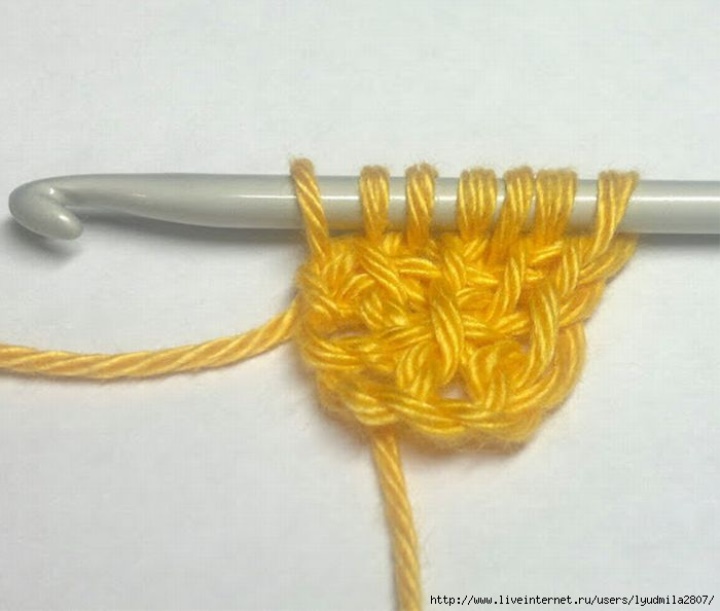
5. As usual, we knit the first loop with a single, the rest - two by two. Ready the second row of five columns, including the edge.
6. In each of the next row in the recruitment add 2 loops, pulling them out of the horizontal jumper between the columns: after the first two columns and before the last two.
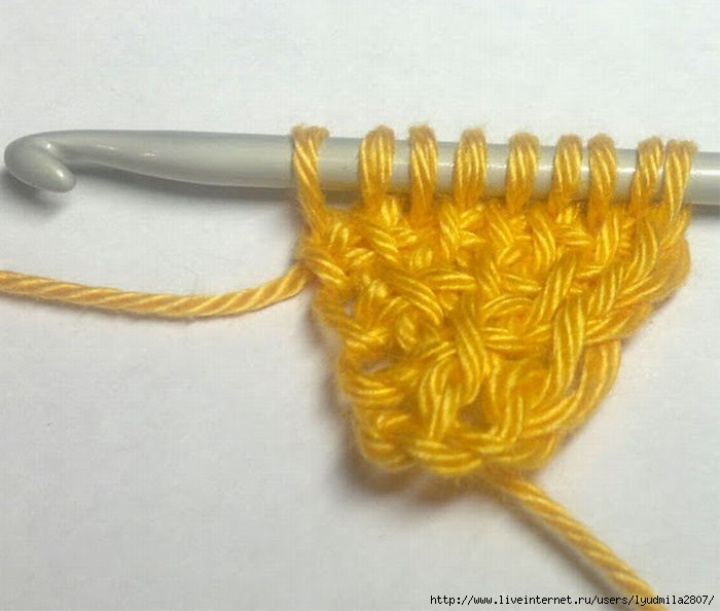
7. The third row: 7 columns, including the edge.
8. A set of loops for the fourth row: on the hook 9 loops. Additional loops - the third on the right and the third on the left. Tied out of the horizontal jumpers between the columns of the previous row.
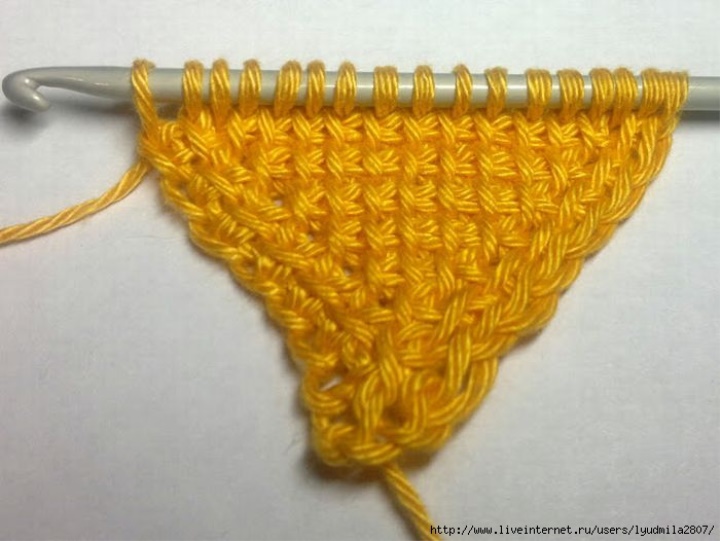
9. The fourth row is ready.
10. The picture shows the loop for the 8th row. They turned out 17. On the usual hook with a thickening is almost the limit. Fortunately, for small parts more and do not need.
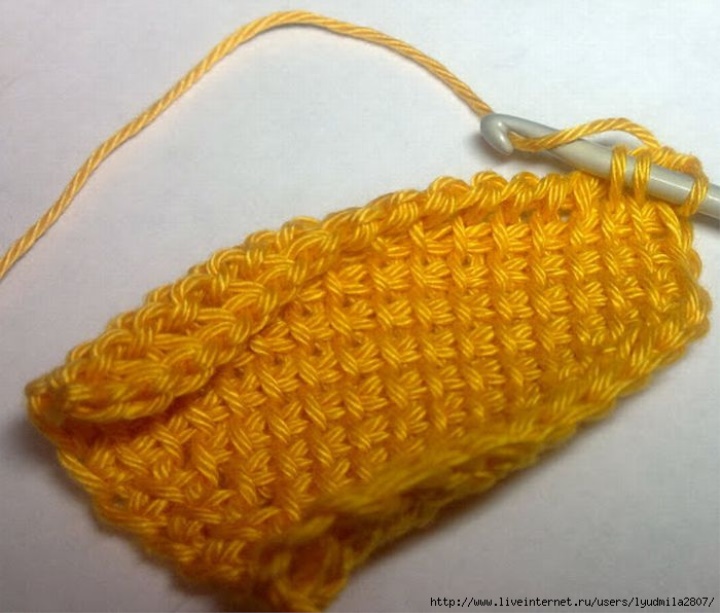
11. The next few rows are knit without increases and reductions. The canvas is already beginning to curl.
12. Begin to reduce the number of loops. Pulling the first loop of the next row, we introduce the hook right under the two vertical half loops of the previous row.
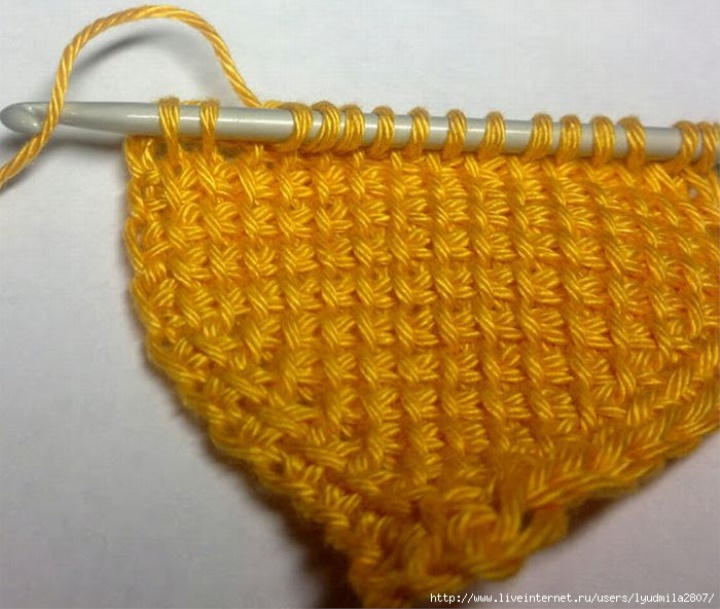
13. Result: they entered the hook under the two half-loops, and pulled one out.
14. On the left we perform a decrease in the same way: we enter the hook under the two penultimate vertical half-loops (the last is the edge).
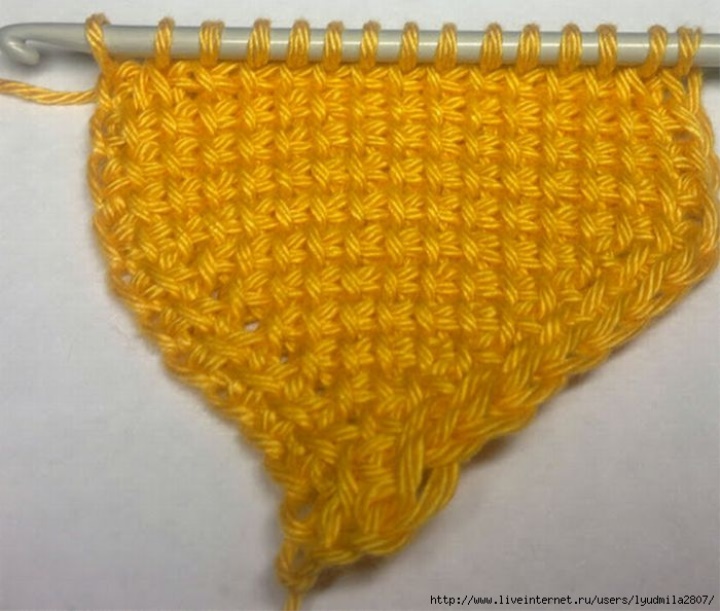
15. From the two half-loops of the previous row, draw out one loop.
16. Recruited loops for the first row with decreasing.

17. The series is knitted.
18. Several rows are connected with cuts.
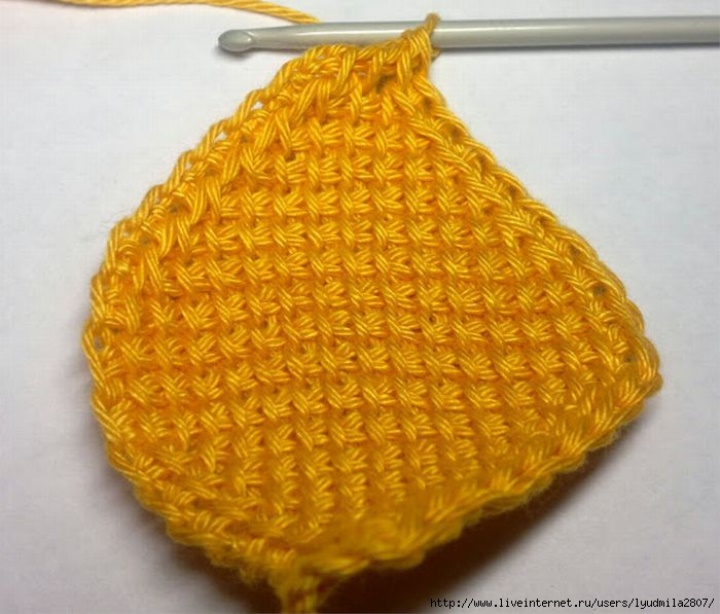
19. Finally, after a uniform decrease on the hook, five loops remain.
20. Knit them up. On the hook is only the right edge.
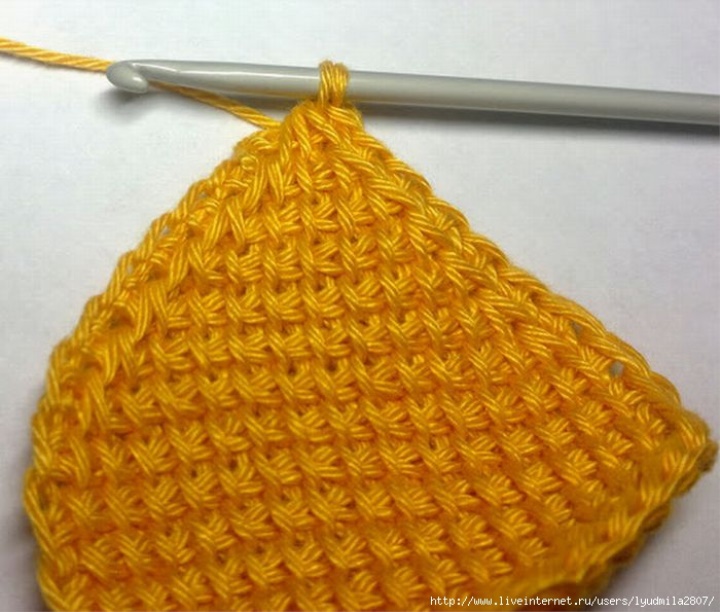
21. Enter the hook immediately under the three vertical half loops.
22. Of the three, the half-string of the previous one pulls one out.
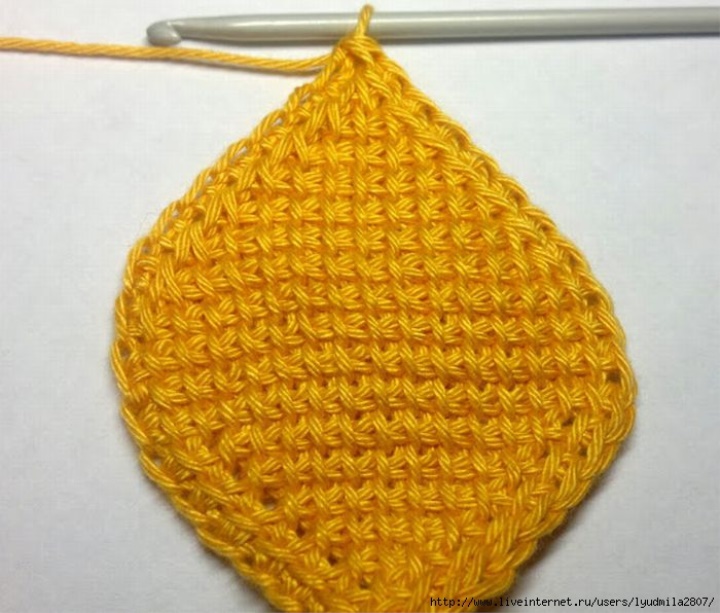
23. Pull out the left edge loop. There are now three loops on the hook.
24. In one step, we knit all three loops on the hook. Is done.
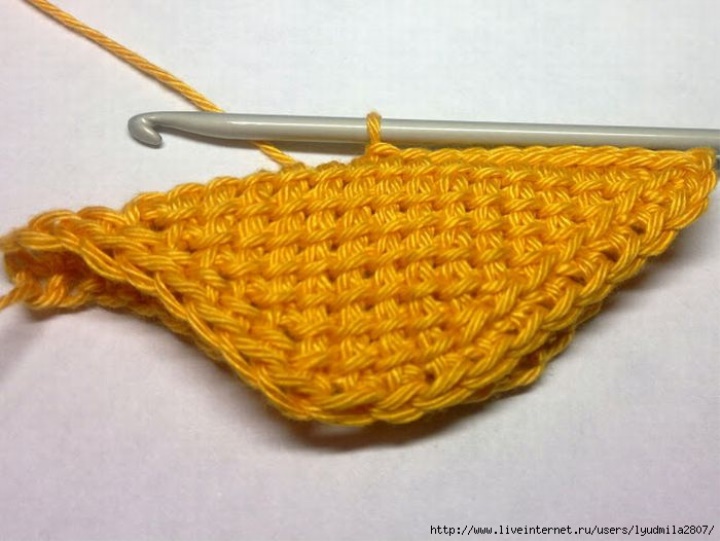
25. From top to bottom, connecting the posts, we knit the central vein.
26. For convenience, the part can be folded in half.

27. Almost "Hooray"! For the present the cloth strongly twists.
28. Attach the wire to the edge of the part and begin to tie the canvas around the perimeter with columns without crochet.
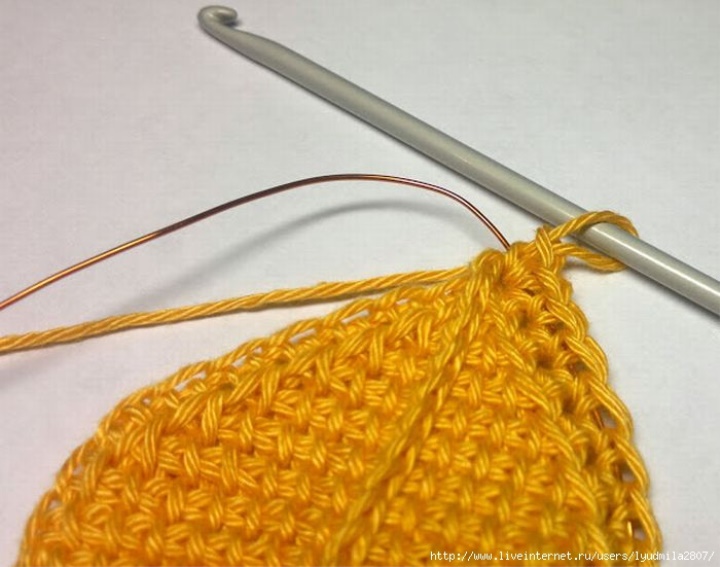
29. Continuing to tie the part for loops of pigtails from the right edge loops.
30. In the "tip" can knit and two, and three loops, so that the canvas is not tightened.
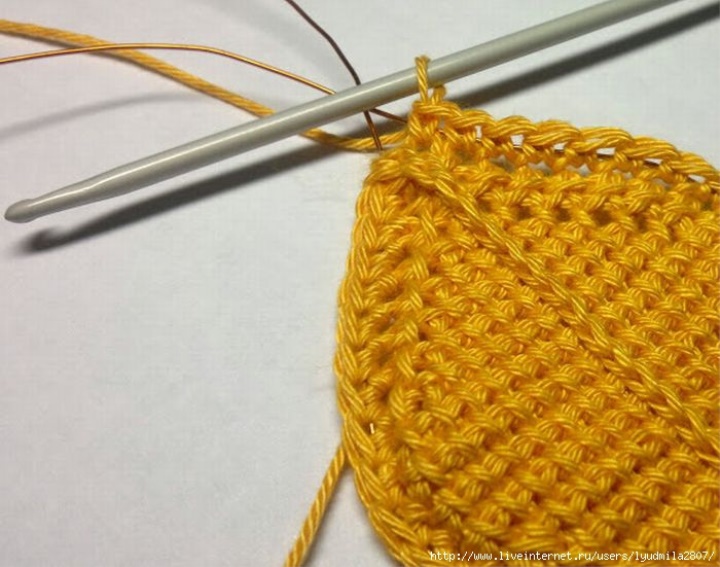
31. Continuing strapping. It must be said that it will not be symmetrical, since along the left edge of the part there is no longer a "pigtail", but a sequence of single-arch arches.